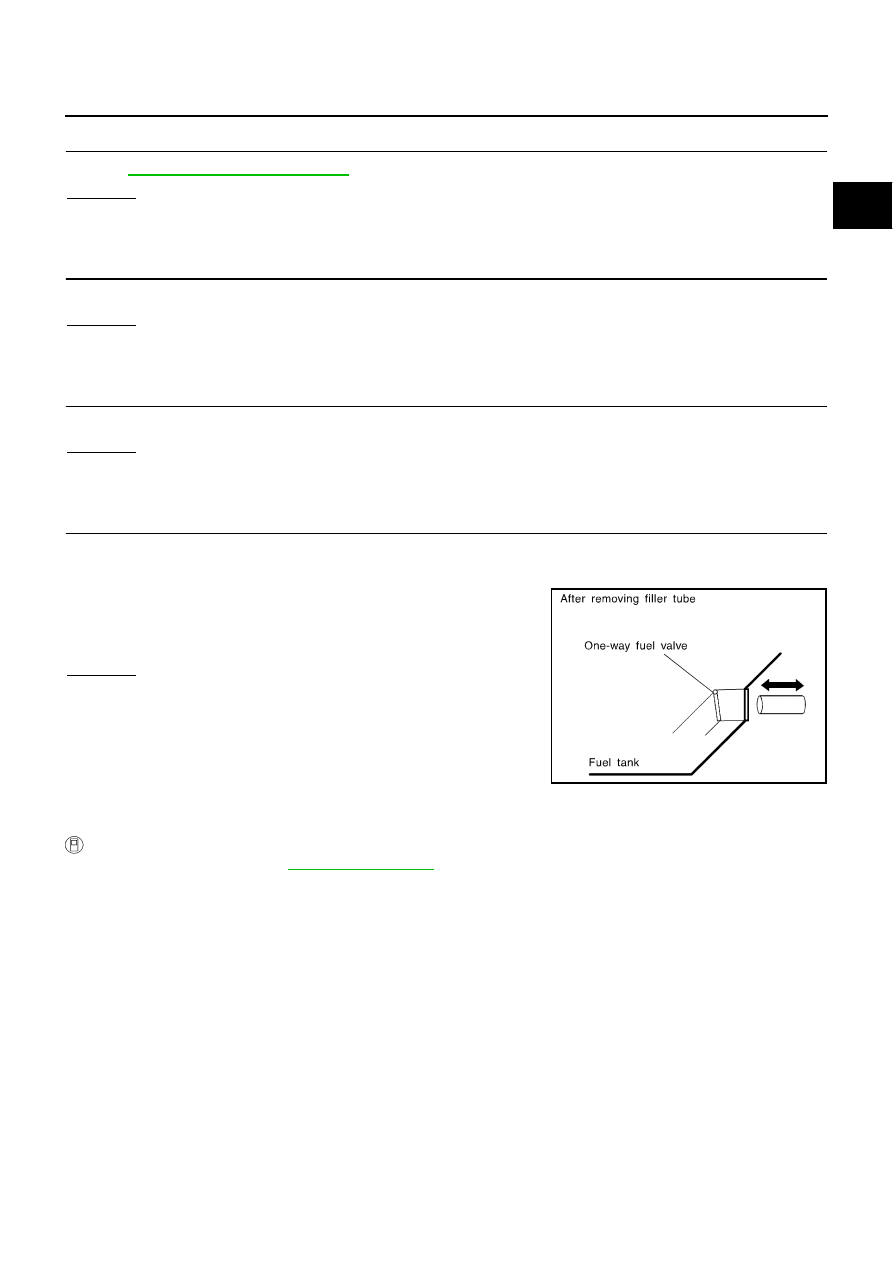Infiniti M35/M45 Y50. Manual - part 394

ON BOARD REFUELING VAPOR RECOVERY (ORVR)
EC-49
[VQ35DE]
C
D
E
F
G
H
I
J
K
L
M
A
EC
7.
CHECK REFUELING EVAP VAPOR CUT VALVE
Refer to
OK or NG
OK
>> GO TO 8.
NG
>> Replace refueling EVAP vapor cut valve with fuel tank.
8.
CHECK FUEL FILLER TUBE
Check filler neck tube and hose connected to the fuel tank for clogging, dents and cracks.
OK or NG
OK
>> GO TO 9.
NG
>> Replace fuel filler tube.
9.
CHECK ONE-WAY FUEL VALVE-I
Check one-way valve for clogging.
OK or NG
OK
>> GO TO 10.
NG
>> Repair or replace one-way fuel valve with fuel tank.
10.
CHECK ONE-WAY FUEL VALVE-II
1.
Make sure that fuel is drained from the tank.
2.
Remove fuel filler tube and hose.
3.
Check one-way fuel valve for operation as follows.
When a stick is inserted, the valve should open, when removing
stick it should close.
Do not drop any material into the tank.
OK or NG
OK
>> INSPECTION END
NG
>> Replace fuel filler tube or replace one-way fuel valve
with fuel tank.
Component Inspection
NBS004SH
REFUELING EVAP VAPOR CUT VALVE
With CONSULT-II
1.
.
2.
Drain fuel from the tank as follows:
a.
Remove fuel feed hose located on the fuel gauge retainer.
b.
Connect a spare fuel hose, one side to fuel gauge retainer where the hose was removed and the other
side to a fuel container.
c.
Drain fuel using “FUEL PUMP RELAY” in “ACTIVE TEST” mode with CONSULT-II.
3.
Check refueling EVAP vapor cut valve for being stuck to close as follows.
Blow air into the refueling EVAP vapor cut valve (from the end of EVAP/ORVR line hose), and check that
the air flows freely into the tank.
4.
Check refueling EVAP vapor cut valve for being stuck to open as follows.
a.
Connect vacuum pump to hose end.
b.
Remove fuel gauge retainer with fuel gauge unit.
Always replace O-ring with new one.
c.
Put fuel tank upside down.
SEF665U